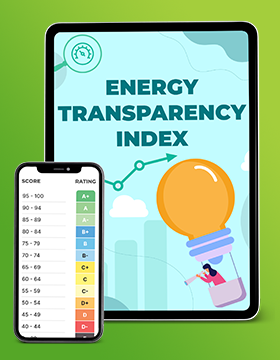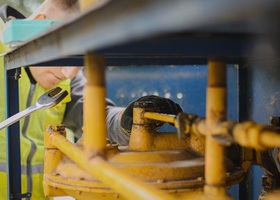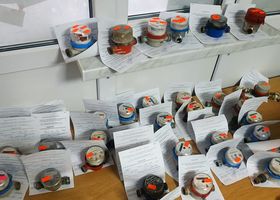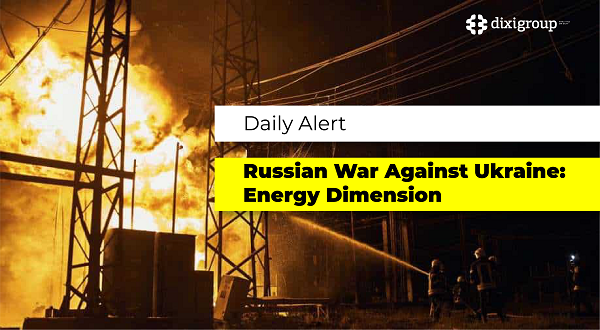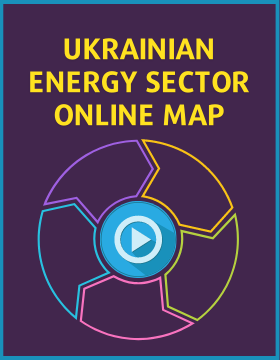Humanitarian demining of Ukraine: a problem for 30 years
One day of combat operations is a month of work for sappers and deminers

At the World Economic Forum in Davos, Ukraine’s First Deputy Minister of Economy Oleksiy Sobolev told the world community that significantly more resources are needed to clear Ukrainian lands, which is why the Government is working on innovative financial instruments. He spoke during the discussion “Demining Ukraine: Building a Sustainable Future through Green Recovery and Sustainable Agriculture,” organized by the Tony Blair Institute in Davos.
According to UNDP estimates, such instruments could attract over $260 million to the mine action sector.
Ukraine is currently using drones, AI, remotely controlled vehicles, and even lasers for humanitarian demining. The goal for 2025 is to build an innovative ecosystem, continue to test technologies in real conditions, and create a regulatory framework to support their application, — said Sobolev.
“Ukrainian Energy” found out what is happening in Ukraine with demining while the full-scale Russian invasion continues.
Demining at a pace
Ukraine is currently the most mined country in the world - in 2024, experts estimated that about 156 thousand sq. km of our territory were potentially mined. This poses a serious threat to the lives of civilians, blocking the economic development of the regions.
In 2024, the humanitarian demining market began to actively form in Ukraine. Currently, demining 1 hectare costs from 40 to 70 thousand UAH. The number of demining operators is constantly growing, but there are still not enough of them, because the volume of work is enormous. The Ukrainian experience in creating such a market is unique and is already attracting the attention of the whole world.
Thanks to the joint work of mine action operators and demining units of the Security and Defense Forces, the area contaminated with explosive objects decreased by 17,000 sq. km over the year. This was reported by the Ministry of Defense of Ukraine.
As of now, the area of potential contamination is 139 thousand sq. km.
“Non-technical survey (NTS) was conducted in 165 territorial communities – almost three times more than planned. Also, over 300 sq. km of potentially or actually contaminated territories were identified that require further humanitarian demining,” said Colonel Ruslan Beregulya, Head of the Main Department of Mine Action, Civil Protection and Environmental Safety.
During the year, humanitarian demining was carried out by 27 certified mine action operators. This is over 2 thousand people, 27 mechanized demining vehicles and 6 teams of mine detection dogs.
Last year, demining units of the Security and Defense Forces detected and destroyed 227,502 explosive objects, and mine action operators – 10,923. Significant assistance in mine action is provided to Ukraine by international partners. On February 15, 2024, during a meeting of NATO member states in Brussels, the Mine Action Coalition was established, which currently includes 22 countries.
Disappointing forecasts
The volume of potentially mined territories in Ukraine reaches 139 thousand km² - this is more than the area of Greece, Bulgaria or Austria.
The World Bank estimates the costs of complete demining at $ 34.6 billion. And this is a problem not only for the Ukrainian economy and ecology, but also for world food security.
But what about time? Minister of Internal Affairs Ihor Klymenko stated at the International Summit of Cities and Regions that it will take Ukraine more than 10 years to demine agricultural lands alone.
“Today, we are faced with a big problem that the enemy continues to leave us - this is the total mining of territories, and the longer the enemy is in a particular temporarily occupied territory, the larger the area of mining. Moreover, we are faced with a huge number of traps both in houses and at critical infrastructure facilities. Even in children's rooms and schools. Power lines and gas pipelines are also mined,” the Minister of Internal Affairs emphasized.
According to the Ministry of Internal Affairs, about 30% of the territory of Ukraine is currently mined. In view of this, the Ministry of Internal Affairs has created an International Coordination Center for Humanitarian Demining. All forces of the Ministry of Internal Affairs are involved in this process - units of the State Emergency Service, the National Police, and sappers of the National Guard. However, this is not enough at the moment.
Former Minister of Defense Oleksiy Reznikov believes that Ukraine will need about 30 years and at least five thousand specialists to demine the territories. This is provided that Ukraine moves at the pace of Croatia, where the war ended 28 years ago, and part of the territories are still mined.
Asako Okai, Director of the Crisis Office of the United Nations Development Program, reported that Ukraine has become one of the world's largest minefields, clearing it of explosives requires more than 180 thousand sq. km. of territory.
However, the war is not over yet, and Russian troops, albeit slowly, continue to advance, in particular in the Donetsk region. So, all the figures can be quite conditional and change.
What is the state doing?
Humanitarian demining, which is a set of actions aimed at eliminating threats associated with explosive objects. And every year the process of humanitarian demining is being improved. According to the Chairman of the Board of the Association of Mine Action Workers, Timur Pistryuga, 2024 has become important for this area - after all, the National Strategy for Mine Action was approved, the humanitarian demining market was launched, the system for booking sappers was improved, and domestic demining equipment was developed.
On January 20, the Ministry of Defense of Ukraine officially announced that in Ukraine, at the level of the state standard, the use of UAVs and the results of satellite image analysis during the survey of territories contaminated with explosive objects has been standardized.
The Eastern Europe Foundation announced a competition to find a contractor to provide services for creating software for the register of territories contaminated / presumably contaminated with explosive objects.
This was reported by the Ministry of Economy of Ukraine.
The creation of the register is provided for by the Land Code, and the product itself will be developed in accordance with the provisions developed by the Ministry of Economy together with the Ministry of Internal Affairs.
“Six months ago, we adopted the procedure for maintaining and administering the register of potentially/contaminated territories. And during this time, specialists from the Ministry of Economy, the State Emergency Service, and the Humanitarian Demining Center have done a lot of preparatory work on what such a digital product should look like. I urge technical companies to apply for participation in the competition in order to get the opportunity to work on a project that will make our country safer. Because the created register is a universal tool that will help to plan the demining of territories in a high-quality manner, will allow farmers and local authorities to check the condition of certain areas literally in a few clicks,” said Deputy Minister of Economy of Ukraine Ihor Bezkorovaynyi.
The owner of the register will be the State Emergency Service, and the technical administrator will be the Humanitarian Demining Center.
The register will contain information from various sources. The register will be filled in by employees of the Secretariat of the National Mine Action Authority, representatives of village, settlement, city councils, military-civilian administrations. As well as the Mine Action Center and authorized government units carrying out humanitarian demining.
The development of the register of potentially contaminated territories will be carried out with the financial support of the EGAP Program, implemented by the Eastern Europe Foundation at the expense of Switzerland.
Foreign partners are also not standing aside.
For example, this year alone, Great Britain and Switzerland allocated $500,000 for a pilot project on prioritization in humanitarian demining in Ukraine, and Slovenia provided equipment for the State Emergency Service and demining.
Several dozen countries not only finance humanitarian demining programs, but also provide expert support, train specialists, and supply modern equipment for demining mined areas.
In Ukraine, in 2025, it is planned to conduct a technical survey of territories with an area of 31 thousand sq. km for the presence of explosive objects and create a Register of contaminated or potentially contaminated territories.
This was announced by Prime Minister Denys Shmyhal following a meeting on the status of demining activities in 2024, Ukrinform reports.
In general, the state compensation program for agricultural land demining began operating in September 2024. During this time, the Humanitarian Demining Center signed 51 agreements with mine action operators for the amount of 532 million hryvnias following auctions.
The Minister of Internal Affairs Ihor Klymenko spoke about the key areas of work for 2025 in the field of clearing the territories of Ukraine contaminated with explosives. Among them, the creation of an interdepartmental base for training mine-detection dogs is being completed.
In 2025, it is planned to implement the Register of Territories Contaminated with Explosives. It will publish verified information about territories affected by hostilities. In addition, it is planned to expand the arsenal of innovative technologies. UAVs with magnetometers and robotic complexes for demining are being developed.
Civilian and demining
Civil sappers and deminers are becoming increasingly popular in Ukraine. Volunteers and veterans are joining mine action activities.
“Until 2022, there was practically no humanitarian demining in Ukraine. There was military and operational demining. The second is being carried out by the State Emergency Service and the police. Over the past year, humanitarian demining has emerged, which involves the profession of a deminer,” says Volodymyr Bayda, head of the Humanitarian Demining Center.
Director of Patron Demining Scientific and Production Company LLC Andriy Serbin says that 65 companies - mine action operators are currently engaged in clearing territories from the consequences of war. Another 50 companies have submitted documents for certification.
“As practice shows, companies employ experienced people who have experience in demining in the State Emergency Service, the State Special Transport Service, and the military. They know the specifics of this difficult work. They can give useful advice. Therefore, we want to establish a dialogue between manufacturers of demining equipment and mine action operators who will use technological innovations and inventions directly in the field. Such innovations in some cases allow us to speed up the work by 2-3 times, and most importantly, they make the work of sappers safer,” says Serbin.
According to him, Ukraine currently needs more than 10 thousand new sappers for humanitarian demining.
The head of the non-governmental charitable organization that conducts humanitarian demining, The HALO Trust, James Cowen, says from his own experience that there is a rule that one day of fighting is equal to one month of demining.
“And since the war is not over yet, we cannot say how long it will take to clear the territories. It will take a long time: years, maybe decades. But you can speed up this process by mechanization. In this process, we want to use a lot of mechanical installations to be able to demine territories not only with the help of human sappers, but also with the help of technology. Secondly, we want to conduct really thorough reconnaissance work, surveys, because usually only about 10% of the land suspected of being mined is actually mined. So high-quality reconnaissance activities can not only save a lot of money, but also a lot of time,” explains Cowen.
Despite all the loud statements, the war is currently ongoing – more and more territories, both liberated and occupied, need military and humanitarian demining. So it is very important for Ukraine not only to continue work in this direction, but also to involve partners in demining its own territories.
Olena Marchenko, specially for Ukrainian Energy

